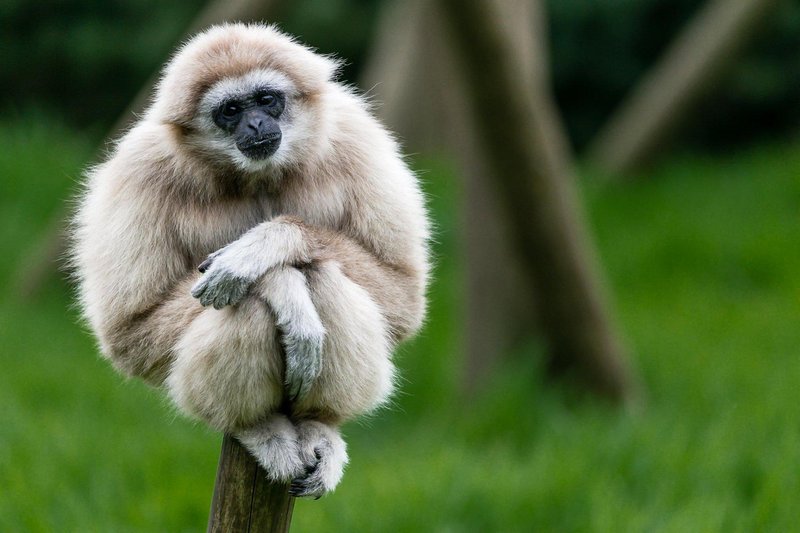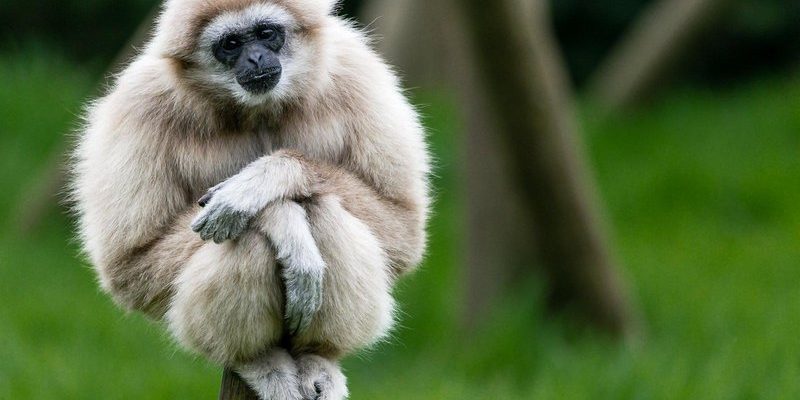
Across different cultures, gibbons symbolize more than just their physical agility. They often represent *freedom*, *connection with nature*, and even *spirituality*. Let’s explore how gibbons have been depicted through art, mythology, and storytelling, and why they continue to resonate with people of all ages and backgrounds.
Gibbons in Folktales and Myths
In many Asian cultures, the gibbon finds a place within folktales and myths. For instance, in some Indonesian stories, gibbons are portrayed as wise creatures that guide lost souls through the jungle. Their vocalizations, often shrill and melodious, are seen as messages from the spirit world. These tales utilize the gibbon’s natural calls to symbolize communication between humans and nature, reminding us to listen to the world around us.
Similarly, in Thai folklore, gibbons are associated with creation myths. They’re often depicted as tricksters or clever beings who use their intelligence to outsmart predators or solve problems for other animals. This reflects a cultural appreciation for wit and resourcefulness, traits that many admire. These stories not only entertain but also convey important life lessons, encouraging listeners to value cleverness and adaptability—much like the gibbon itself.
Symbolism in Art and Literature
Gibbons have also made their mark in art and literature. Artists often capture the gibbon’s playful behavior and striking beauty in their works. The imagery of these apes swinging through trees is a popular motif in paintings and sculptures, symbolizing vitality and the splendor of the natural world. For example, in Southeast Asian art, gibbons are sometimes featured alongside other wildlife to portray the harmony of life in the forest.
In literature, gibbons appear as characters that embody the *spirit of the jungle*. Writers use them as symbols of freedom and resilience, reflecting their ability to swing gracefully from branch to branch. This imagery encourages readers to embrace their adventurous spirit and appreciate the beauty of life’s journey, much like the gibbon, who thrives in its canopy home.
Gibbons in Modern Culture
As gibbons continue to capture our imaginations, they find their place in modern culture too. From animated films to children’s books, these creatures are often portrayed as fun, loving characters. For instance, in some popular animated series, gibbons are depicted as playful sidekicks, helping the main characters on their adventures. This portrayal contributes to a warm, friendly image of gibbons, making them relatable to younger audiences.
Moreover, documentaries showcasing gibbons in their natural habitat highlight their social behaviors and family dynamics. This not only educates viewers about the importance of these animals but also fosters a deeper appreciation for wildlife conservation. By emphasizing the beauty of gibbons, modern media plays a crucial role in spreading awareness about their importance in nature and the need for their protection.
Gibbons in Music and Dance
In certain cultures, the sounds of gibbons inspire music and dance. Their distinctive calls have even influenced local music styles, where artists mimic these sounds to create unique rhythms. This connection emphasizes how intertwined gibbons are with the cultural fabric of the regions they inhabit.
Traditional dances may incorporate movements that imitate gibbons swinging through trees, showcasing the grace and agility of these animals. By doing so, performers celebrate the gibbon’s spirit while also promoting the notion of harmony with nature. This cultural expression brings communities together while highlighting the importance of preserving the natural world around them.
Conservation Messages in Folklore
Interestingly, gibbons are often seen as symbols of conservation in many cultures. Folktales that feature gibbons may include moral lessons about protecting nature and wildlife, encouraging younger generations to respect their environment. For instance, stories about gibbons being endangered due to habitat loss spark discussions about conserving rainforests and biodiversity.
These narratives often highlight the relationship between gibbons and their habitats, reiterating the idea that maintaining healthy ecosystems benefits all living beings. By embodying the need for conservation in folklore, gibbons serve as reminders of our responsibility to protect nature, making their cultural representations even more significant today.
Personal Connections to Gibbons in Culture
You might be surprised to learn that gibbons can also create personal connections across cultures. People often share their own stories and experiences with wildlife, including encounters with gibbons in the wild or in zoos. These experiences can evoke feelings of joy, curiosity, and sometimes sadness, especially when reminders of the animals’ endangered status arise.
Cultural expressions, like art and storytelling, allow individuals to reflect on their own experiences with gibbons and nature. By sharing tales of gibbons, people forge a bond over shared values of freedom, playfulness, and environmental stewardship, creating a rich tapestry of cultural significance surrounding these incredible primates.
From ancient folktales to modern media, gibbons have carved out a unique space in culture and folklore. They embody themes of freedom, wisdom, and the importance of nature. Whether they’re depicted swinging from trees in a painting or inspiring a catchy song, gibbons continually engage our imagination and evoke a sense of wonder.
As we reflect on their representation in culture, we’re reminded of the vital role these creatures play in our ecosystem and the stories we tell. By celebrating gibbons through various cultural lenses, we not only honor their existence but also inspire future generations to care for the world around them. So, the next time you hear a gibbon’s call or spot one at the zoo, take a moment to appreciate the rich history and messages intertwined with these fascinating animals.

